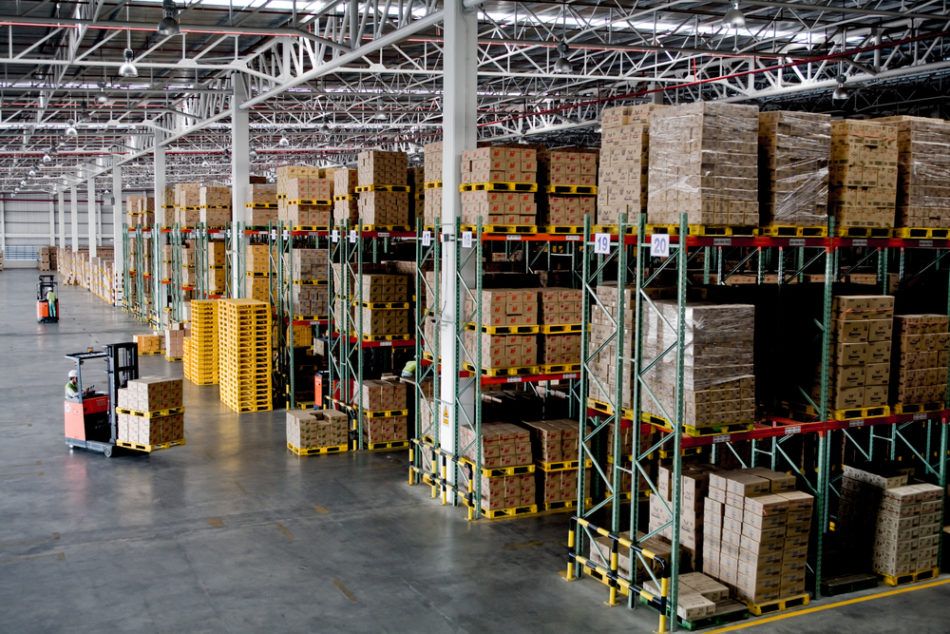5 Benefits of a Warehouse Wi-Fi Solution for Your Business
Warehouses and manufacturing floors are notoriously difficult to supply with Wi-Fi coverage. Large metal racks, a plethora of handheld devices,...
2 min read
 Craig Badrick
:
Jul 19, 2016 6:00:00 AM
Craig Badrick
:
Jul 19, 2016 6:00:00 AM

Warehouses are notoriously difficult when it comes to providing a good WiFi solution. Many are 50,000 square feet or larger, but sheer size isn’t the hardest thing to work with when it comes to wireless connectivity. Much more intrusive are things like the racks, the ever-changing stock, equipment, and the devices trying to utilize the wireless. What should you consider before investing in a warehouse WiFi solution?
Usually, getting the WiFi signal out to users devices isn’t the biggest problem; the biggest challenge is that low-powered devices (like smartphones and tablets) can’t get their signal back to the access point. Smaller devices are typically lower-powered devices, so if these need to connect to your WiFi, you’ll need a wireless network plan and site survey to properly place the correct number of access points in the proper locations.
Another challenge in a warehouse is the constantly fluctuating number of users. Today, there might just be a handful of forklift drivers around. Tomorrow, there might be a group of 20 partners or investors visiting, quickly and drastically upping the demand for bandwidth. The types of applications users access also plays a role, so you will need to plan for different capacities, depending on the types of applications your users need to access via your network.
A common mistake in warehouses is to crank the power settings up to the maximum to try to get a higher powered signal out to the workers. This doesn’t work. First, it does nothing to combat the problem we just discussed — the devices being able to get a signal back to the access points. Secondly, it causes more interference than it does signal improvements. Invest in a properly designed warehouse WiFi solution that has the ability to adapt to the ever-changing environment; and get the right number of access points for your unique location(s).
There are two types of antennas: directional antennas that are designed to push a signal out into a specific area or direction, and omnidirectional that are designed to push a signal out 360-degrees. Many locations require a combination of antenna types due to rack locations, ceiling heights, ability to run cabling and out buildings. Be sure to select the correct types of antenna you need, based on the layout of your warehouse and the configuration of your wireless network.
The location of the access points, types of antennas you need, and the devices and applications in use on the network all significantly impact the type of warehouse WiFi solution you need.
Should you opt for placing the AP’s on the ceiling of the warehouse? Doing so could move the access points out of range for many devices, as the ceilings of a warehouse are often 30 feet or higher. Placing the AP’s too low can result in poor coverage due to racks of goods, or damage from forklifts. This is another example of when proper planning with a well thought out RF design and site survey will help achieve a solid, reliable wireless network.
If you need to deliver WiFi access outside the confines of the warehouse walls, you will probably need to invest in additional AP’s. Outdoor break areas, docks and other outdoor environments present their own WiFi challenges, not the least of which are heat, humidity and contaminants. Discuss your particular situation and needs with your warehouse WiFi solution provider.
Are you ready to get started? Call Turn-key Technologies today to request a quote for reliable, dependable warehouse WiFi solutions.

Warehouses and manufacturing floors are notoriously difficult to supply with Wi-Fi coverage. Large metal racks, a plethora of handheld devices,...

WiFi networks for warehouses: a notoriously difficult challenge. Here are the five most common mistakes made when setting up warehouse WiFi networks....

When it comes to warehouse wireless networking, too few warehouse managers are happy with their wireless solutions. Big promises from the vendors...